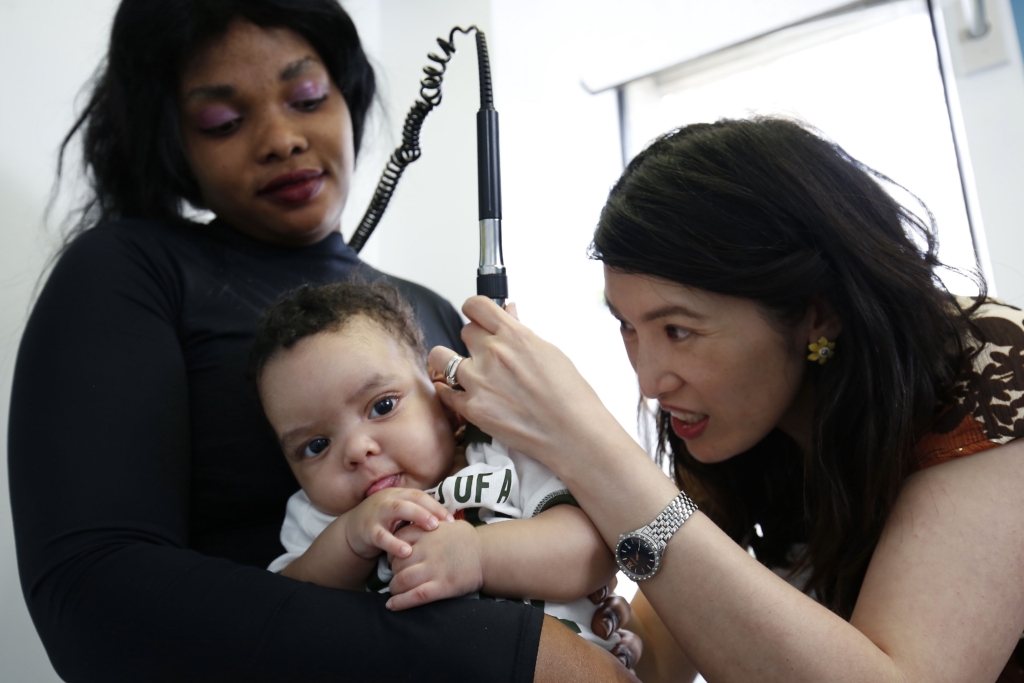REACH fills void in healthcare system for refugees resettling to Saskatoon

Photo by Kevin Hogarth, Courtesy of Saskatoon Open Door Society
By Danielle Chartier, Member and Public Relations Director
Fleeing your home as a refugee puts your health at risk, even after you’ve safely arrived in the country that has taken you in.
“Being a refugee, itself, creates risk factors for your health … Any journey where you’re fleeing persecution and violence leads to higher risk of trauma and mental health difficulties,” explains pediatrician Mahli Brindamour.
The Refugee Engagement and Community Health Clinic (REACH), which calls the Saskatoon Community Clinic (SCC) home, does its best to ensure the hundreds of refugees who arrive in Saskatoon every year have the best possible start to their life in this city.
“There’s lots of hope, but we need to provide services in a timely manner. If we support refugees’ basic needs and look after the health needs of the entire family, we know they will be healthy, productive and involved members of our community. That’s what we have seen,” says Brindamour who helped found and still works with REACH.
REACH has been doing this work since 2016 growing into a successful collaboration between many partners: the SCC; Global Gathering Place; Saskatoon Open Door Society; University of Saskatchewan’s Departments of Family Medicine, Pediatrics, Community Health and Epidemiology; the Saskatchewan Health Authority’s Public Health, Primary Health and Mental Health Services; and Tuberculosis Prevention Control (SK).
“REACH was formed in response to the increasing number of refugees arriving in Saskatoon, coupled with the lack of a dedicated, coordinated and centralized health delivery service for this vulnerable and underserved population,” says SCC Executive Director, Lisa Clatney.
It began with SCC adding ad hoc clinics to its roster on evenings and weekends, mostly volunteer-based, after the sudden arrival of a large number of refugees from Syria and has grown into a clinic serving all refugees who arrive in Saskatoon.
“REACH has been able to provide these services because SCC has included it within its normal operations despite not yet being able to secure permanent funding to support it,” explains Clatney.
Currently, SCC hosts REACH clinics about three half-days per week, but the demand far exceeds the resources available. The challenge of limited resources and growing demand is not new. As Brindamour points out, refugees resettle in Saskatoon all the time. We have had larger waves in the past and there will be larger waves to come.
But the vast numbers of those currently fleeing Ukraine help bring the challenges of a lack of resources into sharp focus.
“Our waitlists are already incredibly long. We don’t have the capacity to see everyone as often as they’d like or as often as they need,” says Brindamour.
“If we are going to see Ukrainian refugees, we need more resources – more money, more people on the ground for their healthcare and resettlement needs,” she says.
The SCC has sought permanent funding from the province to better support this work and reduce the strain of the additional patient load and complexity on the clinic. Although these requests have been rejected thus far, Clatney believes the case for the government to support this work is strong.
“REACH has demonstrated its effectiveness in providing high quality care to all refugees resettling to Saskatoon, filling a critical void in our health system. Without REACH, refugees would likely seek care in emergency departments and walk-in clinics. This would be a disservice to them, but would also add to the burden of our emergency services and the strain on our already-stressed healthcare system,” says Clatney.
Emergency department and walk-in clinics are not well-equipped to support refugees. For example, not all providers are versed in trauma-informed care, have experience working with translators, if necessary, or have much knowledge of tropical diseases, explains REACH and SCC physician Jacelyn Hanson.
On top of those challenges, emergency departments and walk-in clinics provide episodic disjointed care which can end up costing more, says Brindamour.
“Even going to a specialized clinic like REACH, it is difficult. Everything takes more time and is more complicated than we expect,” she says.
Hanson says one of the great things about REACH is the collaborative approach to this work. “We work as team with the settlement agencies and with the Saskatchewan Health Authority, but also within the clinic. The MOAs (medical office assistants) do a lot of calling and receiving of calls. They know the patients and know who to reach out to. Nursing provides a lot of help. Pharmacy and the lab are awesome taking time with our patients working with translators.”
Although refugees are incredibly diverse in terms of where they’re coming from and the specific details of their journey and their culture, they do share one thing in common that Brindamour says is important to keep in mind.
“Refugees have no choice. They either leave and flee or die and that’s why they come here.” One way you can support REACH and refugees here is by letting your Member of the Legislative Assembly (MLA) know you want this program to receive permanent funding.
If contacting your MLA is new to you, you can ask the Member and Public Relations Department at [email protected] for assistance.



